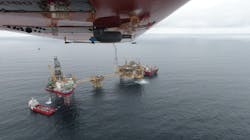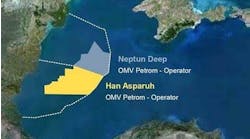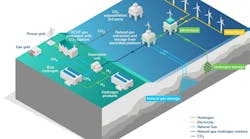Instrumented UAS improving offshore methane detection rates
Offshore staff
FLEET, UK – Unmanned aviation specialist Flylogix and emissions sensor/analytics supplier SeekOps claim to have achieved a milestone in emissions quantification offshore.
During a recent field trial their unmanned aerial system (UAS) and sensor accomplished detection that could verify emission rates in line with the low methane levels associated with many oil and gas facilities in the North Sea (<2.5 kg/hr).
Previous studies depended on survey aircraft with equipment normally used for research activities.
It follows a long program of offshore trials, testing and development of both the UAS and methane measuring technology in the North Sea.
The program is supported by companies including bp, Total, Equinor, Harbour Energy, and Shell.
In its discussion with these operators, Flylogix performed an asset review across the UK continental shelf using data reported through the environmental and emissions measurement system, establishing the requirement for lower detection performance at 10 kg/hr.
This was the initial target, with a stretch target of 3 kg/hr.
Last year, initial trials west of Shetland demonstrated a lower detection threshold of 40 kg/hr. To reduce this threshold, Flylogix and SeekOps, with support from the Oil and Gas technology Centre in Aberdeen, began a development program.
Following laboratory tests conducted by SeekOps, the new technology was trialled in the air at a Flylogix test facility, with offshore field trials starting this March. These demonstrated a lower detection limit of 2.5 kg/hr, equivalent to a 93% increase in performance: the lower detection limit is said to be affected by variables including weather and stand-off distance from the offshore facility.
Controlled release measurement flights are now planned to validate these performance thresholds. In the mean time trials continue across a wide range of facilities in the UK northern, central and southern North Sea, and west of Shetland.
05/18/2021





